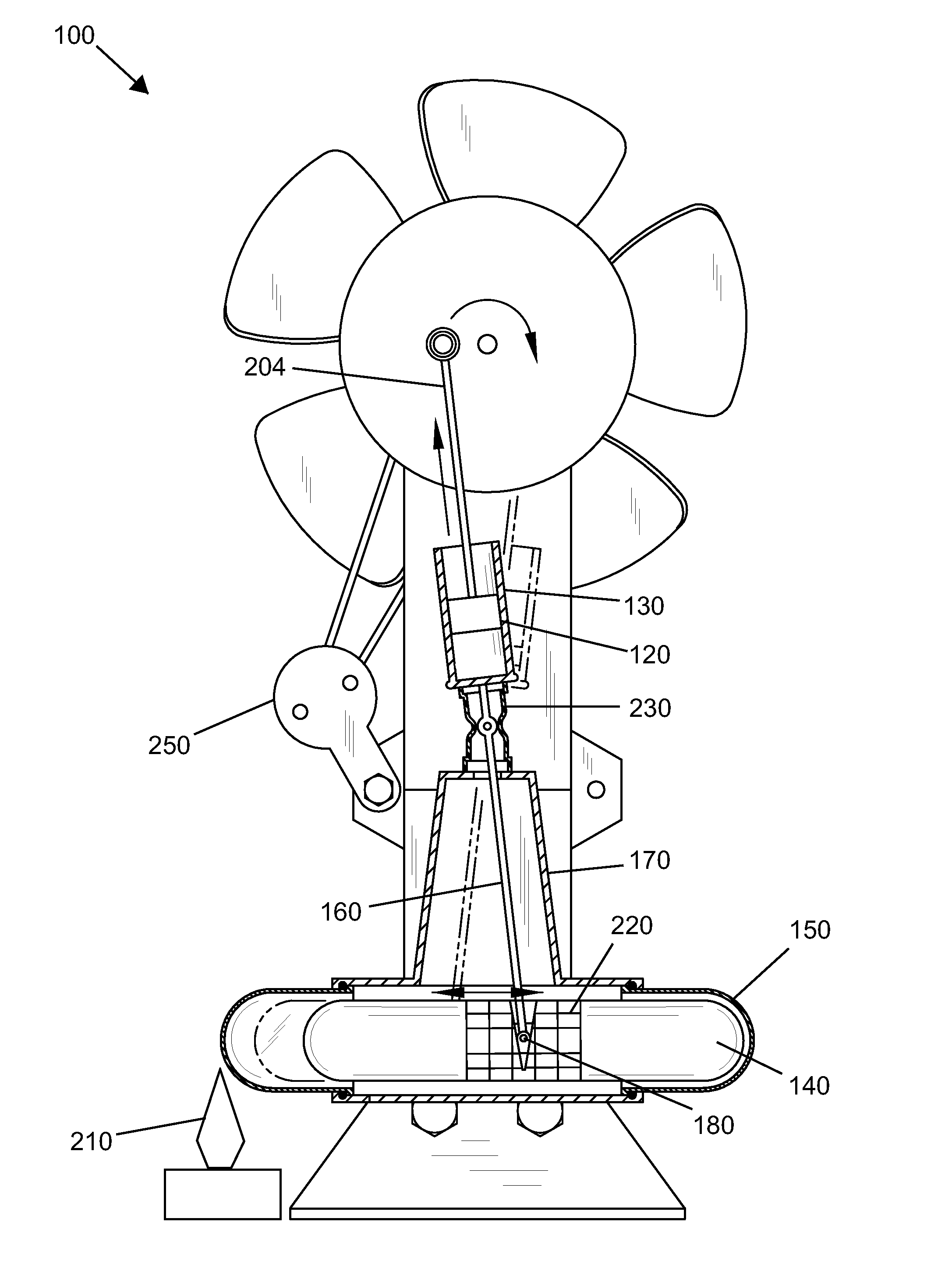Directionally reversible hot air engine system
a hot air engine and directional reversible technology, applied in the direction of machines/engines, hot gas positive displacement engine plants, solar thermal energy generation, etc., can solve the problem that one cannot actually determine the thermal efficiency of an engine withou
- Summary
- Abstract
- Description
- Claims
- Application Information
AI Technical Summary
Benefits of technology
Problems solved by technology
Method used
Image
Examples
Embodiment Construction
[0018]Following is a list of elements corresponding to a particular element referred to herein:[0019]100 Hot air engine system[0020]102 System chamber[0021]110 Frame[0022]112 Frame top[0023]114 Frame bottom[0024]116 Frame middle[0025]118 Frame attachment and adjustment bolt[0026]120 Piston[0027]122 Piston first end[0028]124 Piston second end[0029]130 Piston cylinder[0030]140 Displacer[0031]142 Displacer first end[0032]144 Displacer second end[0033]146 Displacer middle[0034]150 Displacer chamber[0035]152 Chamber first end[0036]154 Chamber second end[0037]156 Chamber middle[0038]160 Rod[0039]162 Rod first end[0040]164 Rod second end[0041]170 Rod housing[0042]180 Hinge[0043]190 Flywheel[0044]200 Crank[0045]202 Wheel[0046]204 Crank rod[0047]206 Crank rod first end[0048]208 Crank rod second end[0049]210 Heat source[0050]220 Regenerator[0051]230 Rubber boot[0052]240 Fan blade[0053]250 Generator
[0054]Referring now to FIG. 1-5, the present invention features a directionally reversible hot a...
PUM
 Login to View More
Login to View More Abstract
Description
Claims
Application Information
 Login to View More
Login to View More - R&D
- Intellectual Property
- Life Sciences
- Materials
- Tech Scout
- Unparalleled Data Quality
- Higher Quality Content
- 60% Fewer Hallucinations
Browse by: Latest US Patents, China's latest patents, Technical Efficacy Thesaurus, Application Domain, Technology Topic, Popular Technical Reports.
© 2025 PatSnap. All rights reserved.Legal|Privacy policy|Modern Slavery Act Transparency Statement|Sitemap|About US| Contact US: help@patsnap.com



